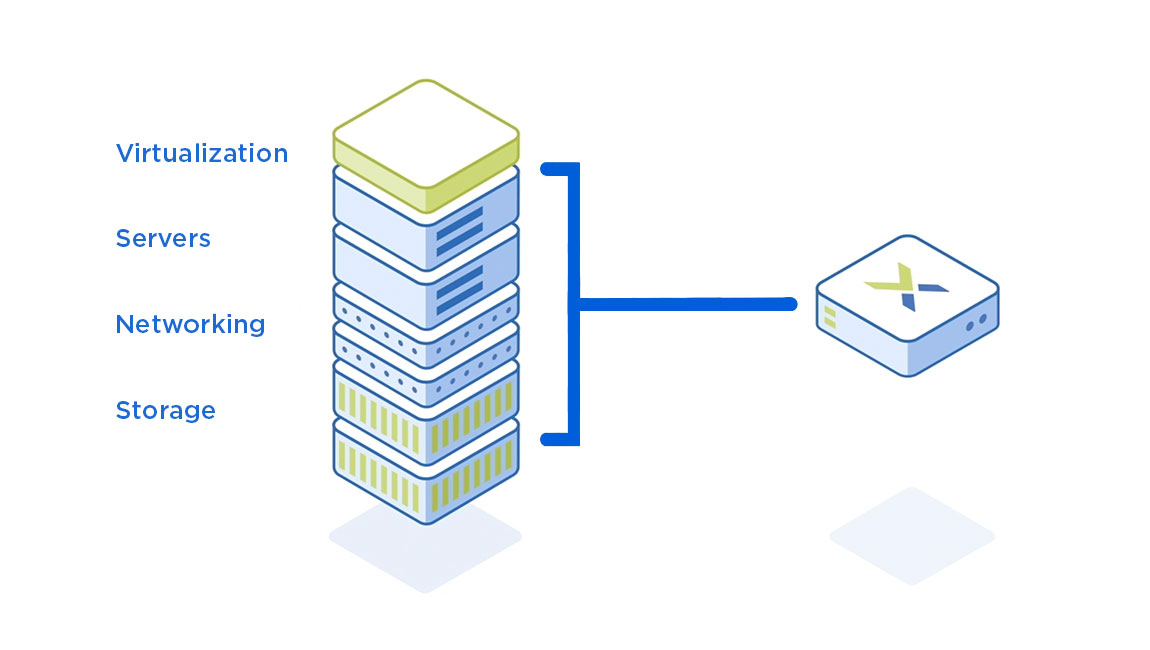Are you tired of juggling complex and expensive data center infrastructure? Imagine a world where your servers, storage, and virtualization are seamlessly integrated, managed through a single pane of glass. That’s the promise of Nutanix hyperconverged infrastructure (HCI).
In essence, Nutanix HCI is a revolutionary approach that consolidates traditional IT silos into a unified, software-defined solution. This means simplified operations, improved performance, and reduced costs – all crucial in today’s fast-paced digital landscape. But how does it actually work? And is it the right choice for your organization? This article will delve into the core components of Nutanix HCI, exploring its benefits and use cases.
We’ll uncover how Nutanix simplifies IT management, enhances agility, and ultimately empowers businesses to focus on innovation rather than infrastructure complexities. Get ready to discover how Nutanix HCI can transform your data center and propel your business forward.
Understanding Nutanix Hyperconverged Infrastructure (HCI)
Nutanix HCI represents a paradigm shift in data center architecture. It melds compute, storage, networking, and virtualization resources into a unified, software-defined system.
Gone are the days of separate, siloed infrastructure components. Think simpler management, better resource usage, and faster scaling for your IT environment.
Imagine a streamlined, agile data center ready to tackle any workload. That’s the promise of Nutanix, giving you more time to focus on what truly matters, which is growing your business.
At its heart, HCI simplifies IT operations. Forget about managing diverse vendor solutions; Nutanix brings it all together in one cohesive platform. That means reduced overhead and complexity.
This approach provides an easier, more efficient, and more cost-effective way to run enterprise applications. Nutanix has you covered for all of your digital transformation needs.
The Core Components of Nutanix HCI
The Nutanix architecture is built on a distributed file system called the Nutanix Distributed Filesystem (NDFS). This innovative file system pools all storage resources across nodes.
It presents a shared storage pool to virtual machines (VMs) or applications running on the cluster. NDFS handles data management tasks like replication, tiering, and snapshots seamlessly.
The hypervisor is another key element of the Nutanix system. Nutanix offers its own hypervisor, AHV (Acropolis Hypervisor), but also supports others such as VMware ESXi and Microsoft Hyper-V.
AHV integrates natively with the Nutanix platform, offering simplified management and reduced licensing costs. You can even mix hypervisors depending on your needs.
Nutanix Prism provides a centralized management interface. It simplifies administrative tasks such as VM creation, monitoring, and resource allocation with easy one-click operations.
Think of Prism as your single pane of glass for managing your entire Nutanix environment. It provides visibility and control over all aspects of your infrastructure.
Benefits of Adopting Nutanix HCI

One of the most compelling advantages of Nutanix HCI is its simplicity. Its user-friendly interface means less time spent on complicated infrastructure management.
This ease-of-use translates to faster deployments and easier scaling as your business grows. It empowers your team to focus on more strategic projects.
Nutanix delivers impressive performance for various workloads, including databases, virtual desktops, and enterprise applications. The distributed architecture ensures low latency and high throughput.
With its scale-out architecture, Nutanix allows you to add resources incrementally, matching your capacity to your actual needs. This avoids over-provisioning and reduces capital expenses.
Built-in data protection and disaster recovery features ensure business continuity and data security. Nutanix provides snapshots, replication, and automated failover capabilities.
Reduce risk and minimize downtime with Nutanix’s robust data protection features. Sleep better knowing your data is safe and protected.
Use Cases for Nutanix HCI
Nutanix HCI is a great fit for virtual desktop infrastructure (VDI) deployments. It delivers the necessary performance and scalability for a seamless user experience.
Centralized management and simplified operations make Nutanix an ideal platform for VDI. Easily provision and manage virtual desktops for your employees.
Running mission-critical databases is an area where Nutanix shines. It provides the high availability and performance needed for these demanding workloads. That ensures smooth operations.
Nutanix simplifies the deployment and management of private clouds. It delivers the agility and scalability required for cloud-native applications.
Organizations use Nutanix to consolidate infrastructure and streamline IT operations. This approach results in lower costs and improved resource utilization.
The flexible nature of Nutanix HCI makes it a valuable asset for businesses of any size looking to improve efficiency.
Getting Started with Nutanix
Evaluate your existing infrastructure and identify areas where HCI can bring value. Consider your current and future workload requirements.
Before you dive in, conduct a proof-of-concept (POC) to validate the technology in your environment. This will help you assess its performance and compatibility.
Work closely with Nutanix or a certified partner to plan and implement your deployment. Ensure a smooth and successful transition.
Training and knowledge transfer are crucial for your IT staff. Make sure they are well-versed in managing the Nutanix environment.
By carefully planning and executing your deployment, you can maximize the benefits of Nutanix HCI and transform your data center.